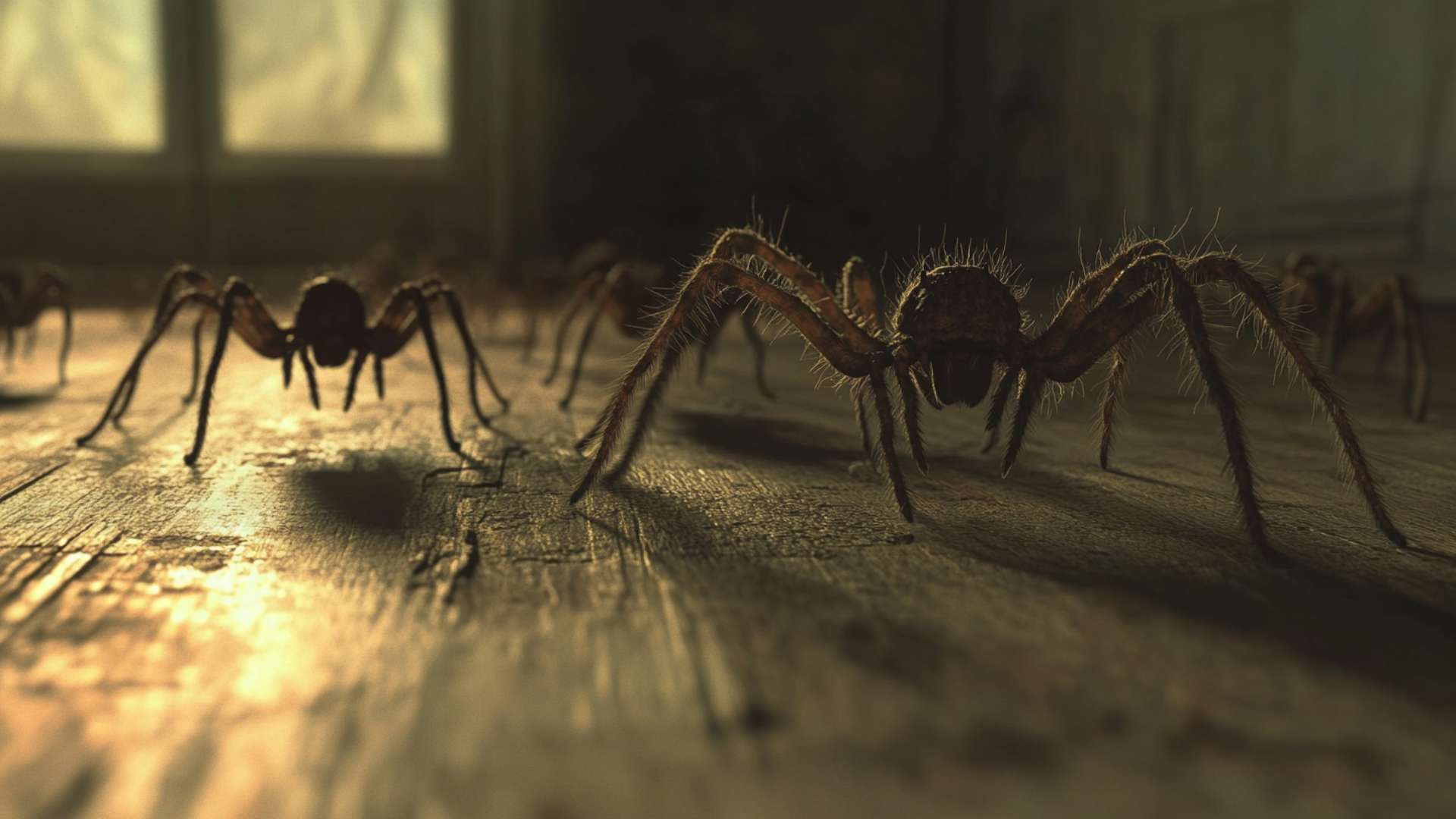Spiders, those eight-legged creatures that often inspire a mix of awe and fear, have captivated our imagination for centuries. Their intricate webs, graceful movements, and predatory nature make them fascinating subjects to observe.
We marvel at their ability to spin silk with such precision and at the intricate patterns they weave to ensnare unsuspecting prey. But beyond their web-building abilities, there is much more to these arachnids that pique our curiosity.
Curiosity about whether spiders can engage in fights

When it comes to spider behavior, we can’t help but wonder: Can spiders fight each other? Our intrigue stems from the fact that many species of animals engage in battles for various reasons – territory, mates, or resources. But what about spiders?
Are they capable of duking it all out fighting with their fellow arachnids? This question has long intrigued researchers who have observed complex interactions within spider communities.
For instance, male spiders often perform elaborate courtship rituals in an attempt to woo potential mates. These rituals sometimes involve flashy displays or even gift offerings.
However unlike male combat, when competing for the attention of a female spider against other males vying for her affection, things can take a more aggressive turn. It’s almost like watching a wrestling match unfold in nature’s arena.
But it’s not just male-male competition that raises eyebrows; female fights also occur within certain spider species. Take the feisty jumping spider Phidippus clarus as an example.
Researchers wondered if these energetic little acrobats engaged in intense battles reminiscent of sumo wrestlers or even a full-blown women’s pro wrestling match. Intriguingly enough, Phidippus females are known for being territorial and fiercely protecting their webs and precious resources from potential rivals.
So naturally, scientists have wondered whether these territorial disputes ever escalate into physical confrontations and if the outcome is determined by sheer strength or some other factor. To uncover the truth about spider battles, we delve into the world of Phidippus clarus spiders, where combatants with their needle-like fangs and agile hind legs might engage in arachnid duels that are more epic than we could have imagined.
Spider Aggression and Territorial Behavior
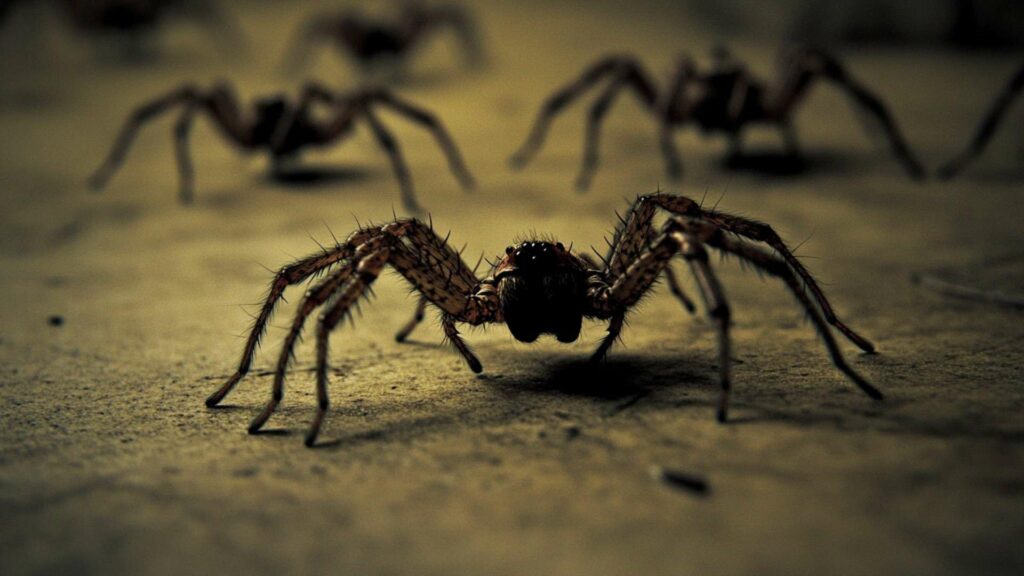
When it comes to aggression, spiders are not to be underestimated. While they may not engage in fierce battles like sumo wrestlers or the thought-provoking matches seen in women’s pro wrestling, spiders have their own unique way of expressing aggression. In the spider world, fights are not uncommon, especially when it comes to securing resources or mates.
Spiders fight for a variety of reasons. One common reason is competition for limited food sources.
Hunger can make even the most docile arachnid turn into a feisty spider prone to aggression. Additionally, some spider species may engage in fights simply out of territorial instincts – defending their webs from intruders or protecting their nests.
Territorial Instincts in Spiders
Territory is important for spiders as it provides them with an abundant supply of food and potential mates. Different spider species exhibit varying degrees of territorial behavior. For instance, jumping spiders (such as Phidippus clarus) live more solitary lives and establish individual territories where they hunt for prey.
The females generally stick to smaller territories compared to males since they focus primarily on finding suitable nesting sites and resources necessary for egg-laying. However, things can get intense when it comes to reproductive competition among females fighting males.
Male jumping spiders often engage in fierce battles with other males over access to reproductive-age females. While female jumping spiders may not participate in elaborate fights like characters on TV wrestling shows, their aggression and territorial behavior should not be underestimated.
From desperate female spiders fighting over limited prey to male combat for mating rights, these arachnids show us that the animal kingdom holds surprising levels of conflict and competition even at its smallest scales. (Note: This section contains fictional phrases from TV shows or sports events and is written exclusively for entertainment purposes.)
Types of spider fights
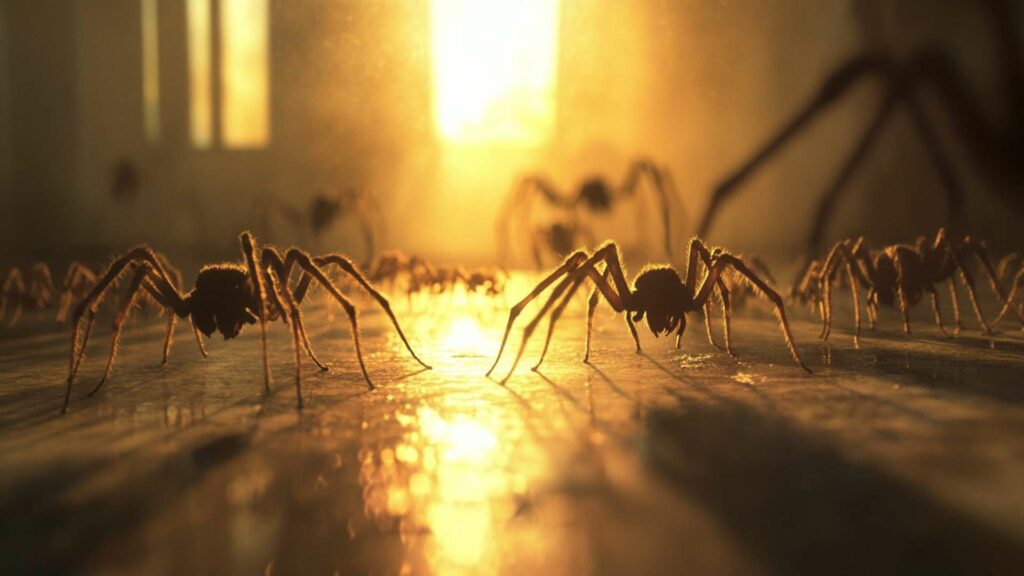
When it comes to males fighting over potential mates, most spiders are not ones to back down. Just like in a rugged wrestling match, the stakes are high during mating season, and male spiders must prove their worthiness to secure a chance at passing on their genes.
Size and strength play vital roles in displaying dominance, as larger males often have the advantage over their smaller counterparts. These battles can range from subtle displays of strength to all-out fights, depending on the species.
For instance, let’s take a look at the feisty spider commonly known as Phidippus clarus. During its elaborate dance of courtship, male spiders aim to impress females with vibrant displays using their hind legs and intricate movements.
However, if two males find themselves competing for the same female’s attention, things can escalate quickly into ritualized combat. They engage in intense battles where they use their mandibles and legs to wrestle each other into submission, establishing a hierarchy that determines who gets to mate. Female-female competition for resources
While male-male competition revolves around securing mates, female spiders engage in fierce rivalry with males fighting only when it comes to resources essential for survival. Researchers have observed female fights centered around necessities such as prey or nesting sites.
With high resource valuation fueling these confrontations, females generally stick up for themselves and are not afraid of getting into aggressive interactions. In some instances where food is scarce or there is limited space available for nesting, female feuds can turn into full-blown battles.
Spiders initiate attacks by lunging at each other with lightning-fast movements and using their fangs or silk-producing glands strategically. The goal is simple: gain an advantage over competitors by overpowering them physically or through intimidation tactics.
It’s fascinating how even in the spider world, survival of the fittest remains a driving force. These battles between the male spider and female spiders illustrate how competition is deeply ingrained in their behavior, ultimately shaping their evolutionary trajectories and ensuring that only the most formidable individuals get to pass on their genes.
Spider fighting techniques and adaptations
Use of venom as a weapon during fights
When it comes to spider battles, venom plays a crucial role in determining the outcome. Various spider species have evolved venomous bites as a means to overpower their rivals. This toxic substance is injected into opponents through their fangs, causing a range of effects depending on the species.
Some spiders possess potent neurotoxins that paralyze their adversaries instantly, rendering them helpless and susceptible to further attacks. Other venoms inflict necrotic damage, causing tissues to break down and giving the victor an advantage in combat.
Venomous bites are employed not only for hunting but also during territorial disputes or fights for mates. In male-male competition for reproductive rights or establishing dominance within a group, some spiders engage in duels where they fiercely bite each other using their fangs as weapons. These battles can be brutal and often determine which male will have access to females or his own territory.
Different types of spider venom and their effects on opponents
Spider venoms come in a diverse array of compositions tailored to suit specific predatory needs or combat strategies. For instance, the venom of black widow spiders contains neurotoxins that target the nervous system, inducing muscle paralysis and intense pain in victims. On the other hand, some hunting spiders use cytotoxic venom that breaks down cell membranes within their prey’s body, leading to liquefaction and easier consumption.
Web-based combat strategies
Beyond venomous attacks, web-building spiders have developed remarkable web-based combat strategies. Disrupting rival’s webs can give them an instant advantage by evicting opponents from their territories or stealing valuable resources such as captured prey items that dangle within reach. Some species even go as far as entangling their opponents in silk threads, immobilizing them, and leaving them at their mercy.
This web-based warfare adds a whole new dimension to spider fights, showcasing the intricate adaptations and cunning tactics these arachnids employ. Spider battles are not reserved for movies or comic books; they are a reality of nature.
Whether it’s through venomous bites or web-based combat strategies, spiders have evolved remarkable techniques to confront each other in the quest for resources, mates, and territory. So next time you stumble upon two spiders locked in an intense confrontation, remember that beneath their tiny bodies lies a world of fierce competition and survival instincts that rival any epic battle scene in human lore.
Notable examples of spider battles in nature
Tarantula vs. tarantula clashes: Intense territorial disputes and rare instances of cannibalistic encounters
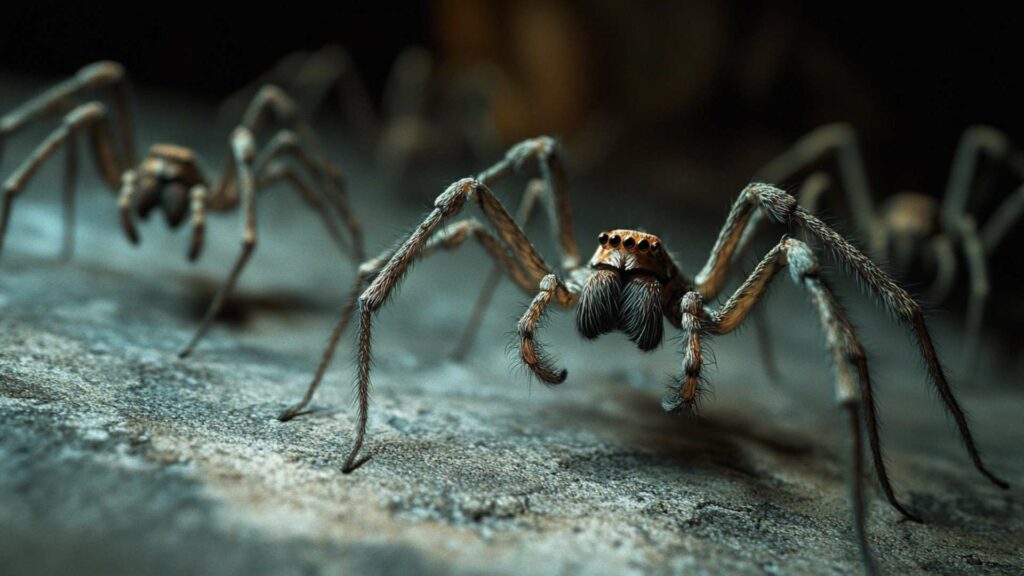
In the world of spiders, few battles are as awe-inspiring as the clashes between tarantulas. These massive arachnids are renowned for their aggressive territorial behavior, often engaging in intense fights to defend their turf. Male tarantulas, in particular, are known to be highly competitive when it comes to securing mates and establishing dominance.
When it comes to male-male competition, the fights among tarantulas can be truly savage. Researchers have observed these remarkable battles where male spiders engage in a no-holds-barred struggle for supremacy.
These confrontations involve displays of dominance through size and strength, as well as ritualized combat that establishes a clear hierarchy within the population. However, perhaps even more intriguing are the rare instances of cannibalistic encounters among tarantulas.
While not all species engage in such behavior, some tarantulas have been known to resort to consuming rival individuals during fights or even mating attempts gone wrong. This brutal aspect of their nature adds an extra layer of intensity and danger to these arachnid skirmishes.
Widow spider confrontations: Female competition for limited resources and mating struggles
The world of widow spiders is filled with feisty females competing for limited resources and mating opportunities. These encounters can range from subtle displays of aggression to all-out fights that leave one spider or participant severely injured or worse.
Researchers have witnessed males perform female black widow spiders engaging in fierce battles over prey items or nesting sites crucial for survival. On top of resource competitions, widow spiders also experience intense struggles between males and females during the mating process.
Male black widows must tread carefully while approaching females because they are at risk of being mistaken for prey or potential threats. The courtship dance and copulation can turn into a dangerous affair, with the male risking his life in hopes of mating successfully.
It is worth noting that while some black widow spider confrontations can be intense, they also have their own unique dynamics. Unlike some other spider species, female black widows generally stick to their territories rather than engaging in frequent fights.
However, when conflicts arise due to high resource valuation or desperation, these usually reserved spiders reveal the true extent of their ferocity. By delving into these notable examples of spider battles in nature, we gain insight into the intriguing world of arachnid competition.
Whether it’s tarantulas engaging in fierce territorial disputes or widow spiders fiercely vying for resources and mating opportunities, these battles provide a glimpse into the remarkable behaviors that have evolved over time. Understanding these interactions enhances our appreciation for the complexity and diversity of life on Earth.
Factors influencing the outcome of spider fights
When it comes to spider fights, size does matter. Just like sumo wrestlers battling it out in the ring, bigger spiders often have an advantage over their smaller opponents. The larger size allows them to dominate with their sheer strength and overpower their adversaries. Males of many spider species are known to engage in intense fights over mates, where they display their size and physical condition to establish dominance. However, it’s not always a straightforward case of big spiders winning every fight. Some smaller species have developed unique fighting tactics that give them an edge against larger opponents. For example, the feisty spider prone to jumping—the Phidippus clarus—may be small in size but compensates with its incredible agility and speed. These tiny jumpers can easily outmaneuver other males during battles for territory or mates.
Just like most animals, male spiders have evolved specific adaptations for combat when engaging in fights with rivals. These adaptations may include specialized appendages or structures that enhance their fighting abilities or protect vulnerable body parts during encounters. For some female jumping spiders fight for instance, some male jumping spiders possess elongated pedipalps (leg-like appendages near the mouth) that they use as weapons when battling other males for mating rights. These pedipalps are armed with sharp spines or hooks that allow them to deliver powerful blows during fights. Similarly, some social spiders living in colonies have developed communal behaviors where they work together to fight off intruders or defend their nests against rival colonies. This collective effort provides a significant advantage over solitary spiders who rely solely on individual prowess.
Environmental factors such as temperature or humidity conditions can also play a crucial role in determining the outcome of spider fights. Temperature, humidity, or other factors may influence a spider’s behavior and physical performance during combat. For example, researchers watched female fights among some different species of jumping spiders and found that higher temperatures increased the aggressiveness of the participants. The hotter it gets, the greater the intensity of fighting tactics displayed by these little arachnids. Humidity can also affect spider behavior. In some cases, when resources are scarce and desperation sets in, female spiders may become more aggressive towards each other. This is especially true for high resource valuation fuels such as prey or nesting sites. Various factors influence the outcome of spider fights. Size and physical condition often determine dominance in battles between male spiders, although smaller species may employ unique fighting tactics to level the playing field. Species-specific adaptations further enhance a spider’s fighting abilities. Additionally, environmental factors such as temperature and humidity can impact their aggressive tendencies during combat. So next time you wonder if spiders can fight each other, remember that there is an intricate world of competition happening in their eight-legged realm—where battles are fought with stealthy finesse or sheer brute force!
The role of fighting in the evolutionary process
In the vast realm of nature, competition is a driving force behind the evolution of species. Spiders, with their remarkable adaptability, have developed intricate fighting mechanisms that serve as an essential element in their evolutionary journey. These battles are often fueled by high resource valuation, such as limited prey or desirable nesting locations.
When resources become scarce, individual spiders engage in fierce confrontations with one another to secure their survival advantages. One fascinating example is the jumping spider Phidippus clarus, renowned for its exceptional athleticism and combat prowess.
These agile arachnids engage in intense territorial disputes where they display impressive acrobatics reminiscent of sumo wrestlers. Their fights involve intricate rituals and complex displays of dominance aimed at establishing hierarchies within their populations.
Female fights and the quest for reproductive success
While male-male competition for mates is well-documented among various animal species, researchers long overlooked the potential for female spiders to engage in combat. However, recent studies have shed light on how desperate female spiders fight others’ fights over limited resources vital for reproductive success. Just like thought women’s pro wrestling matches, these contests are not to be underestimated.
Female fights can be particularly brutal and strategic when it comes to securing optimal nesting sites or preying grounds. Researchers observed elaborate dances between rival females as they vied for control over territories that would provide them with ample food sources and safe havens to raise offspring.
The resilient spirit: Desperate female spiders fight against all odds
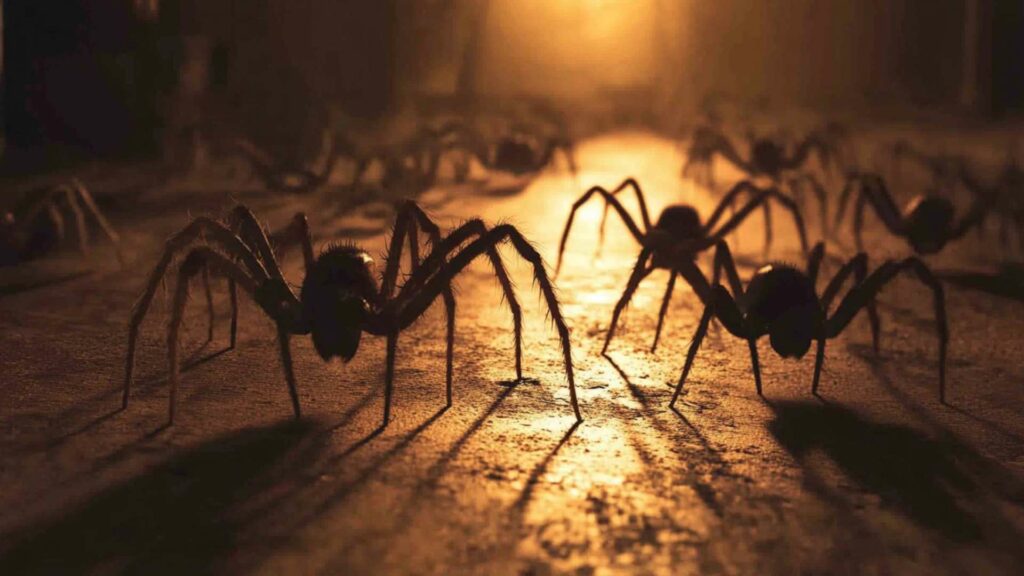
In addition to resource-driven battles among the males rarely females, desperate circumstances can push spiders beyond their usual fighting boundaries. When facing scarcity or imminent danger, some individuals resort to engaging with larger opponents or even different spider species altogether. For instance, imagine a lone female spider who must fend off potential predators while also seeking a suitable mate.
In such cases, the female may be compelled to confront an adversary twice her size or engage in risky encounters with other spiders. These extraordinary battles highlight the resilience and determination of these arachnids, as they defy their usual behavior patterns to ensure their survival and reproduction.
Conclusion
Spiders, often misunderstood and feared, possess a fascinating array of fighting techniques that play a crucial role in their evolutionary process. Whether it be male-male competition for mates or resource-driven conflicts among females, battles among spiders are not only about brute force but also intricate strategies and adaptations.
From venomous bites to web-based combat strategies, these creatures have honed their fighting skills over millions of years. While spider fights may seem intense or even brutal at times, we can appreciate the resilience and determination displayed by these remarkable creatures.
Their ability to adapt under challenging circumstances highlights the incredible diversity of tactics employed by spiders in their quest for survival and reproductive success. So let us marvel at the intricacies of spider battles, recognizing that even in nature’s fierce competitions, there is wisdom and beauty at play.
Defeat Spiders with D-Termination: Las Vegas’ Leading Pest Control Solution!

If you have concerns about spiders in your Las Vegas property, worry not—D-Termination is the answer. Our skilled team excels at eradicating spider infestations, bringing back peace and serenity to your space. Bid farewell to spiders—opt for D-Termination’s effective pest control today!
Contact us at 702-919-6310 or visit dtermination.com to schedule your spider control service and regain your space from these unwelcome pests.
Frequently Asked Questions:
Spiders may engage in aggression toward each other, especially if competing for territory or food.
Yes, some spiders are known to kill and eat other spiders.
Common house spiders might engage in territorial disputes or competition.
Some spiders can coexist peacefully, while others may fight for resources or territory.

